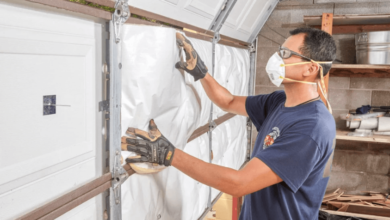Creating an Effective Fire Loss Inventory List: A Comprehensive Guide

When dealing with the aftermath of a fire, having a comprehensive fire loss inventory list can be crucial for insurance claims and rebuilding efforts. This list not only helps document the extent of damage but also facilitates a smoother process for recovery and compensation. We will explore the steps necessary to create an effective fire loss inventory list, ensuring that it covers all critical aspects from initial assessment to final documentation. A well-prepared inventory can significantly assist in maximizing insurance claims and streamlining the recovery process.
Assessing the Scope of Damage
The first step in creating a fire loss inventory list is thoroughly assessing the damage’s scope. Begin by carefully examining each area of the property affected by the fire. Document structural damage, including the integrity of walls, floors, ceilings, and any significant alterations or destruction to the building’s framework. Next, move on to inventorying personal belongings, appliances, and furnishings. Categorize items by room and type, noting their condition, and take detailed photographs or videos to support your assessment. This methodical approach helps ensure no damage is overlooked and provides a clear, organized record of what needs replacing or repairing.
Organizing and Categorizing Items
Once the damage has been assessed, organizing and categorizing the items on your fire loss inventory list is essential for clarity and accuracy. Create separate categories for different types of belongings, such as electronics, furniture, clothing, and personal items. Within each category, list individual items along with their descriptions, quantities, and approximate values. This structured approach allows for a more efficient claims process and helps track replacement costs more effectively. Consider using inventory management software or a detailed spreadsheet to keep everything organized. Ensure each category and item is thoroughly documented to provide a comprehensive overview of the losses incurred.
Read also: Property Investment in Dubai: A Comprehensive Guide
Including Documentation and Proof
Documentation and proof are critical components of a fire loss inventory list. To substantiate your claims, gather and include evidence such as purchase receipts, warranty documents, and photographs of the damaged items. If you have previous inventory records or photos of your belongings before the fire, include these as well. Detailed records of this nature not only bolster your insurance claim but also help verify the accuracy of the reported losses. If necessary, enlist the help of a professional to assess and document the damage comprehensively. Accurate and thorough documentation ensures that your claim is as robust as possible.
Estimating Replacement Costs
Estimating replacement costs is vital to preparing a fire loss inventory list. For each item listed, provide an approximate cost for replacement. Research prices for similar items to ensure your estimates are realistic and up-to-date. If applicable, include new and used options, as this can provide a more accurate representation of the financial impact. Consider obtaining quotes from vendors or service providers to support your estimates for high-value items or those with specific requirements. This detailed approach to cost estimation aids in presenting a well-founded claim to your insurance company, potentially increasing the likelihood of a favorable outcome.
Reviewing and Updating the List
After compiling your fire loss inventory list, review and update it regularly to reflect any new developments or discoveries. As you continue to assess the damage and gather more information, make necessary adjustments to the list. This ongoing process ensures that your inventory remains accurate and comprehensive, capturing any additional losses or changes. Regular updates also help maintain consistency and reliability in your documentation, which is crucial for insurance claims and rebuilding efforts. By keeping your inventory list current, you can address any discrepancies promptly and ensure that all aspects of the fire loss are accounted for.
Submitting Your Inventory to Insurance
Once your fire loss inventory list is complete and updated, the next step is to submit it to your insurance provider. Follow your insurer’s guidelines for submitting documentation and ensure that you include all necessary forms and supporting evidence. Provide a copy of the inventory list and additional documents such as photos, receipts, and repair estimates. Submitting a well-organized and detailed inventory helps facilitate the claims process and can lead to a more efficient resolution. Keep copies of all submitted documents for your records and follow up with your insurance provider to confirm receipt and address any questions or concerns they may have.
Creating an effective fire loss inventory list involves a detailed and organized approach to documenting damage and estimating replacement costs. You can ensure a comprehensive record of your losses by assessing the scope of damage, categorizing items, including thorough documentation, estimating costs, and regularly updating the list. This well-prepared inventory not only supports your insurance claims but also aids in the recovery and rebuilding process. With careful attention to detail and accurate reporting, you can navigate the challenges of fire loss more effectively and confidently move forward.




